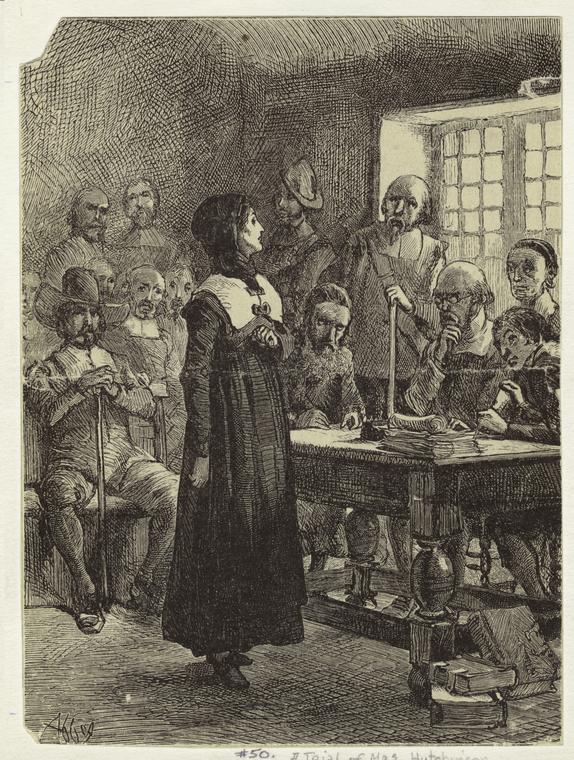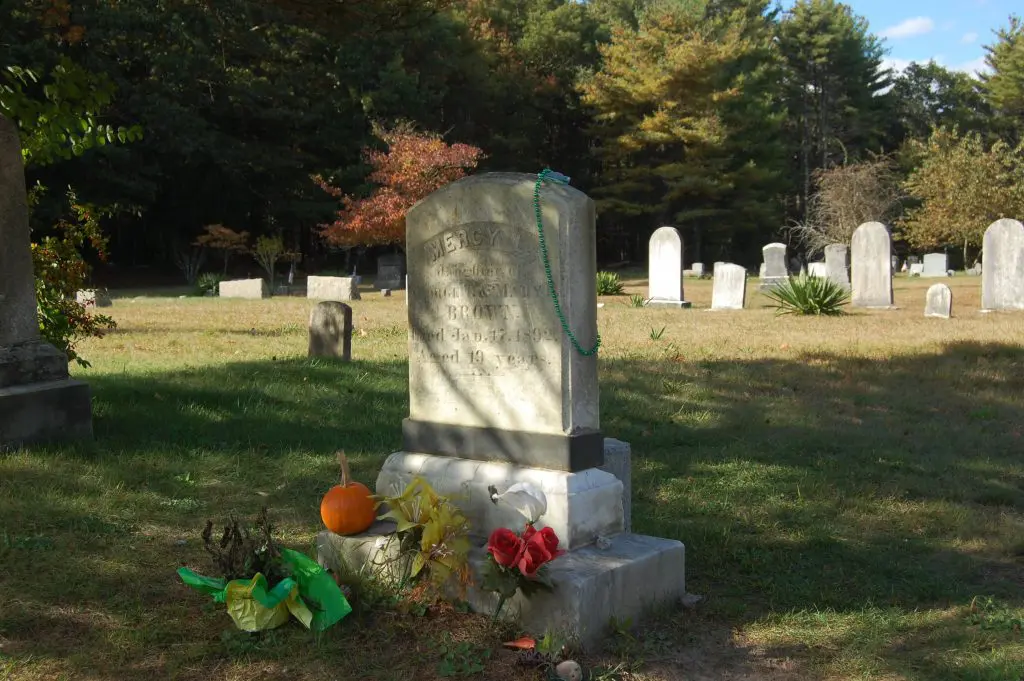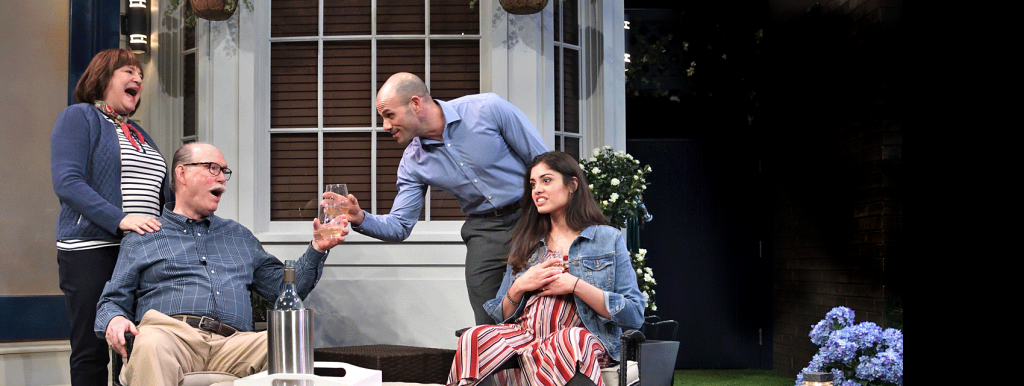You know about the Salem witch trials. But what do you know about Rhode Island’s history of the supernatural?
Being next-door neighbors with Massachusetts, I thought there would be plenty of witchy history here. But to my surprise, there actually aren’t many recorded instances of Rhode Islanders being tried for witchcraft. Maybe since Rhode Island was founded on the principle of religious freedom, Puritan witch hunts were much less commonplace. Many early Rhode Island colonists were people that Massachusetts kicked out for their beliefs, so it makes sense that there are fewer stories about people harassing and torturing their neighbors just because they interpreted a Bible verse differently.

from the New York Public Library Digital Collections.
What I did find was that because of this, Rhode Island became a haven for one so-called “witch” — Anne Hutchinson, one of the founders of Portsmouth. Anne Hutchinson and her husband emigrated from England to Boston, Massachusetts in 1633. A midwife by trade, Hutchinson held a Bible study and sermon discussion group for women in her home. Hutchinson preached that Christians could earn salvation solely through faith, but many Puritans at the time believed that salvation was based on behavior instead of belief. Due to her dissenting viewpoint (and vocal criticism of Puritanism in general), she was put on trial in 1637. Some called her a witch, and when she delivered a stillborn infant, it was considered “the Devil’s work.”
The colony charged her with contempt and sedition for her behavior, leading to her banishment from Massachusetts. At the suggestion of Roger Williams, the founder of what is now Rhode Island, Hutchinson, her family, her followers, and their friends settled on Aquidneck Island, and founded the town of Portsmouth.
From 1637, let’s travel forward a couple hundred years. And a little southwest from Portsmouth to Exeter, Rhode Island, where the Brown family lived a quiet, ordinary life. History probably would have forgotten them if not for the tuberculosis they all caught in 1892 (a.k.a. “consumption” at the time), leading them to slow, painful deaths.
Legend says that when Edwin Brown was sick, he experienced fever dreams about his recently deceased sister, Mercy Brown. “She haunts me,” he reportedly said. “She wants me to come with her.”

The story goes that Mercy and Edwin’s father, George, (the only survivor in the family), dug up the family graves to see if he could rid Edwin of his sister’s spirit. But George observed that while most of the deceased family members’ bodies had decomposed at a normal rate, Mercy’s did not. She didn’t look dead at all: in fact, her body appeared nearly identical to how it was when she was alive, and blood remained in her heart. This was interpreted as a sign that she was undead. (Now, historians theorize that Mercy’s body was probably in this state because she was in a cold crypt during the winter, slowing the decomposition rate). Per superstition, George fed Edwin a tonic made of the ashes of Mercy’s heart and liver (ew) to cure him. And big surprise: It didn’t work. After drinking the strangest cocktail I’ve ever heard of, Edwin died shortly after.
Our last spooky story is one you recognize if you’ve seen any of The Conjuring movies. Does the name Bathsheba Sherman ring a bell? In the first film, the spirit of Bathsheba Sherman is a vindictive ghost, haunting a farmhouse in Burrillville, Rhode Island’s village of Harrisville. According to the movie, she was accused of witchcraft, murdered her infant child, and ultimately committed suicide by hanging. She is said to be haunting the area ever since.
But according to historian and author J’aime Rubio in an interview with The Valley Breeze newspaper, there is no real historical evidence of Bathsheba being accused of witchcraft. All records we have show Bathsheba’s life as being rather uneventful. Born in 1812, she lived in Harrisville with her family, attended church regularly, and died of old age. Pretty typical life for a woman in 1800s New England. There are rumors that an infant she babysat may have died in her care, which may have evolved into the “killing her own baby” story. But there’s no evidence that she murdered the child, especially considering how high the infant mortality rate was at the time.
That’s not to say The Conjuring house can’t be haunted, of course. But Andrea Perron, the Perron family’s eldest daughter, is on the record as believing the real evil spirit in the house is not Bathsheba. Andrea’s family now thinks the malevolent ghost that haunted them was that of a different woman known as Mrs. Abigail Arnold. Yet according to the Conjuring House’s official website, she acts more as a protector of the house than an evil spirit.
At first glance, Rhode Island’s femme history of the supernatural seems small. But its message is mighty: It’s easy to blend fact with fiction if nobody will challenge it for the truth.

